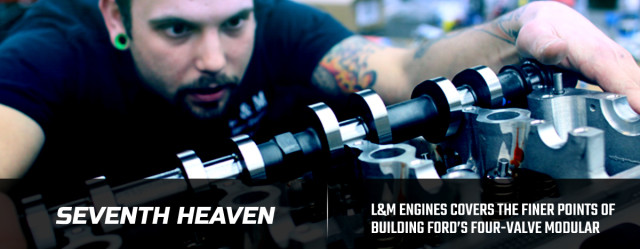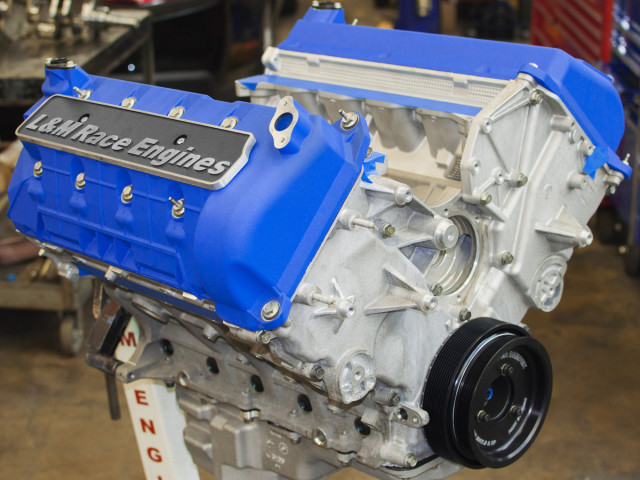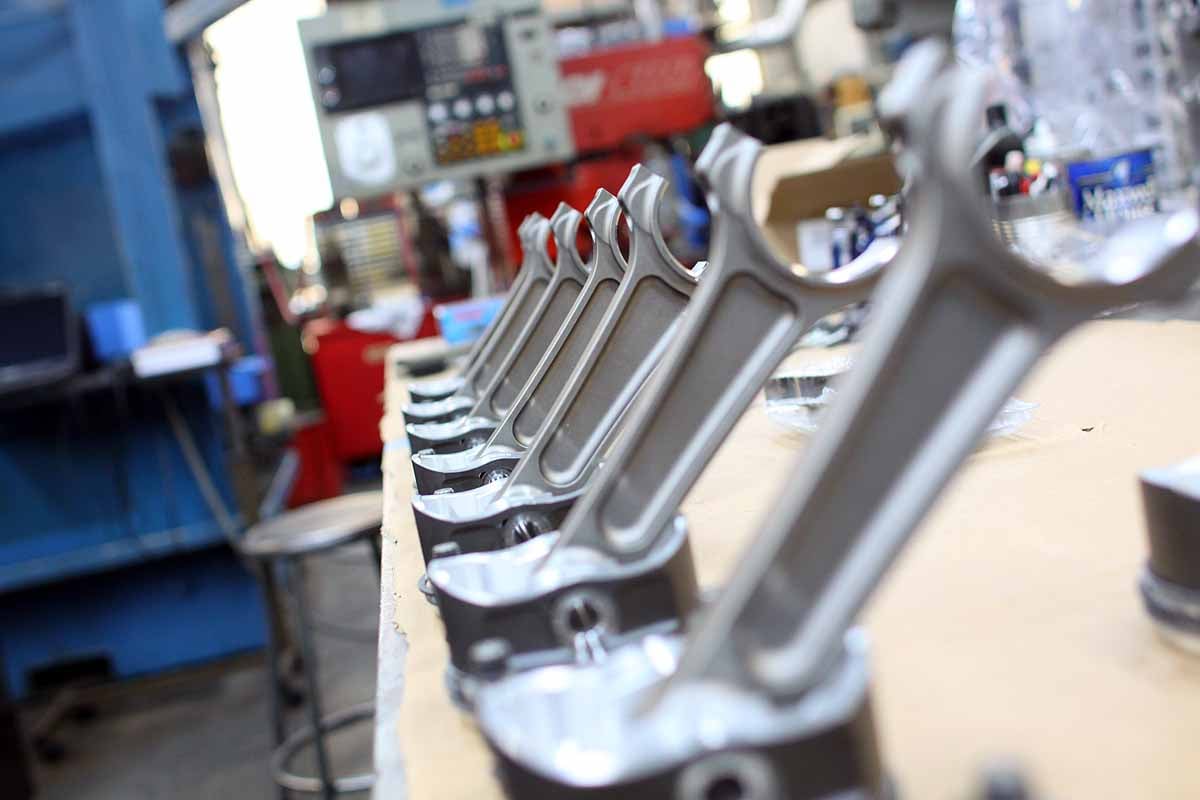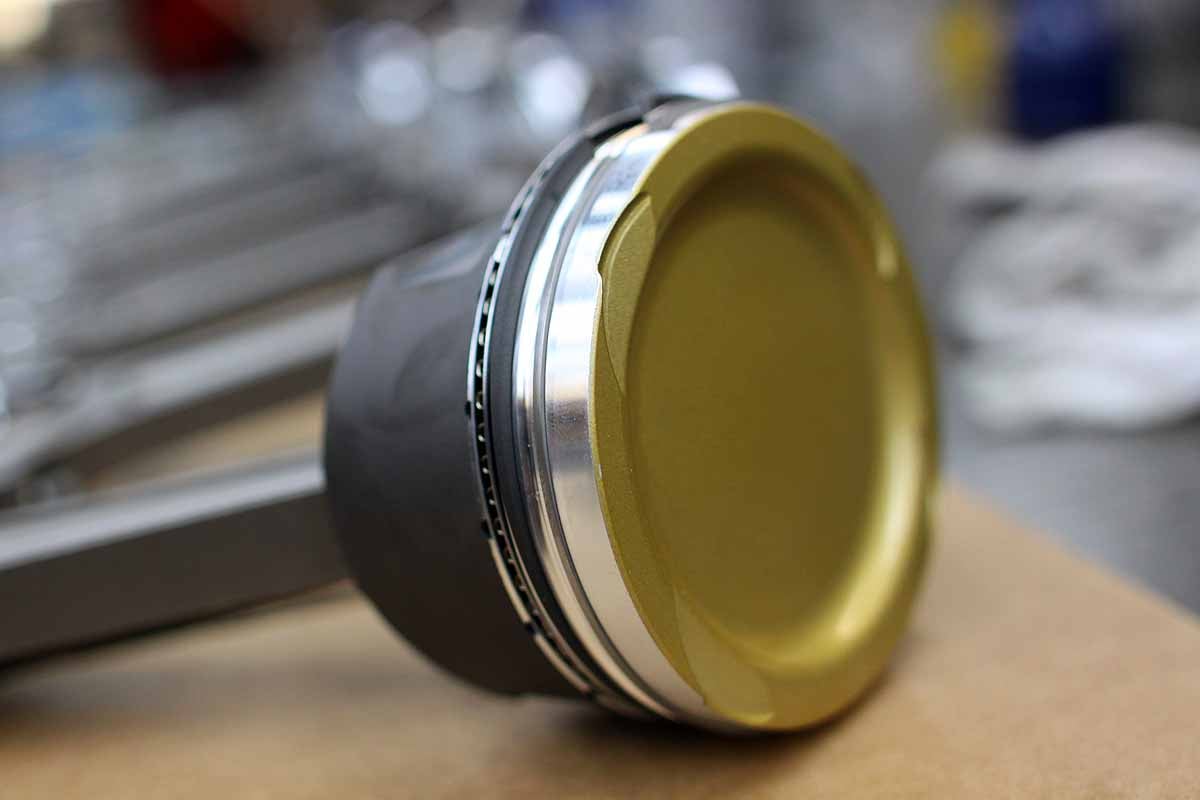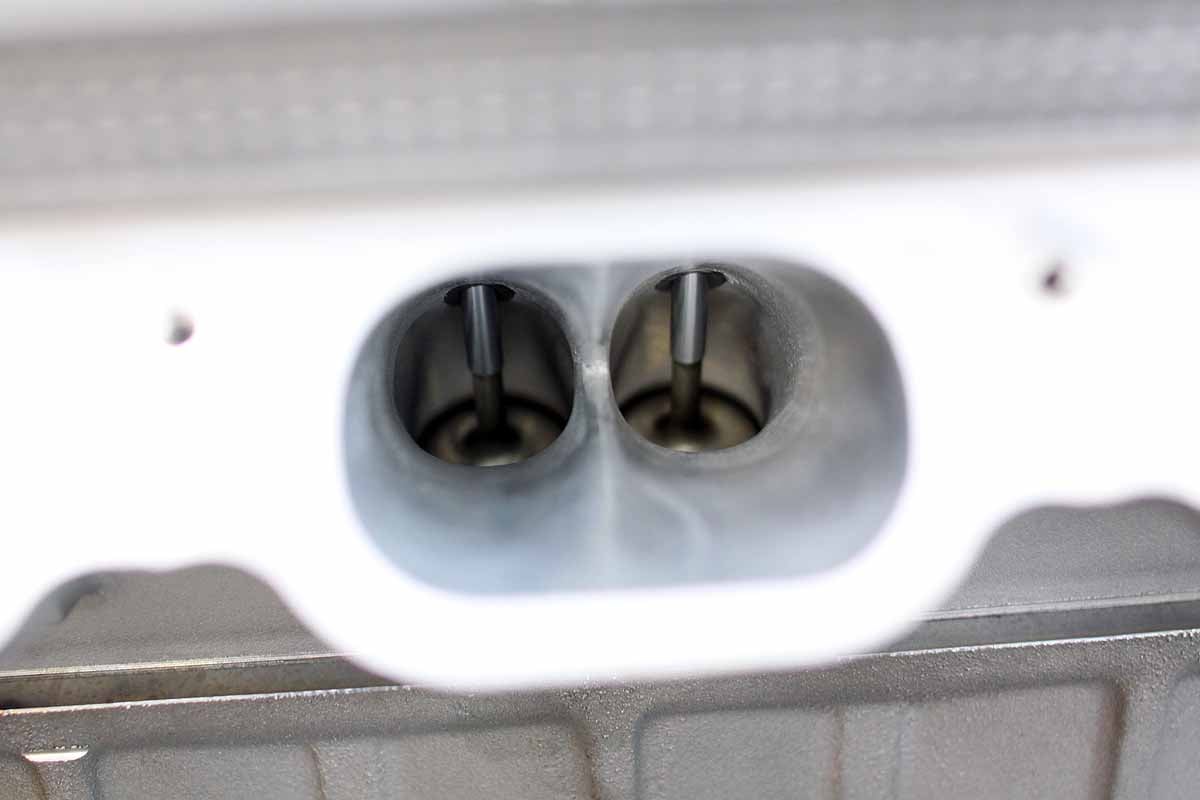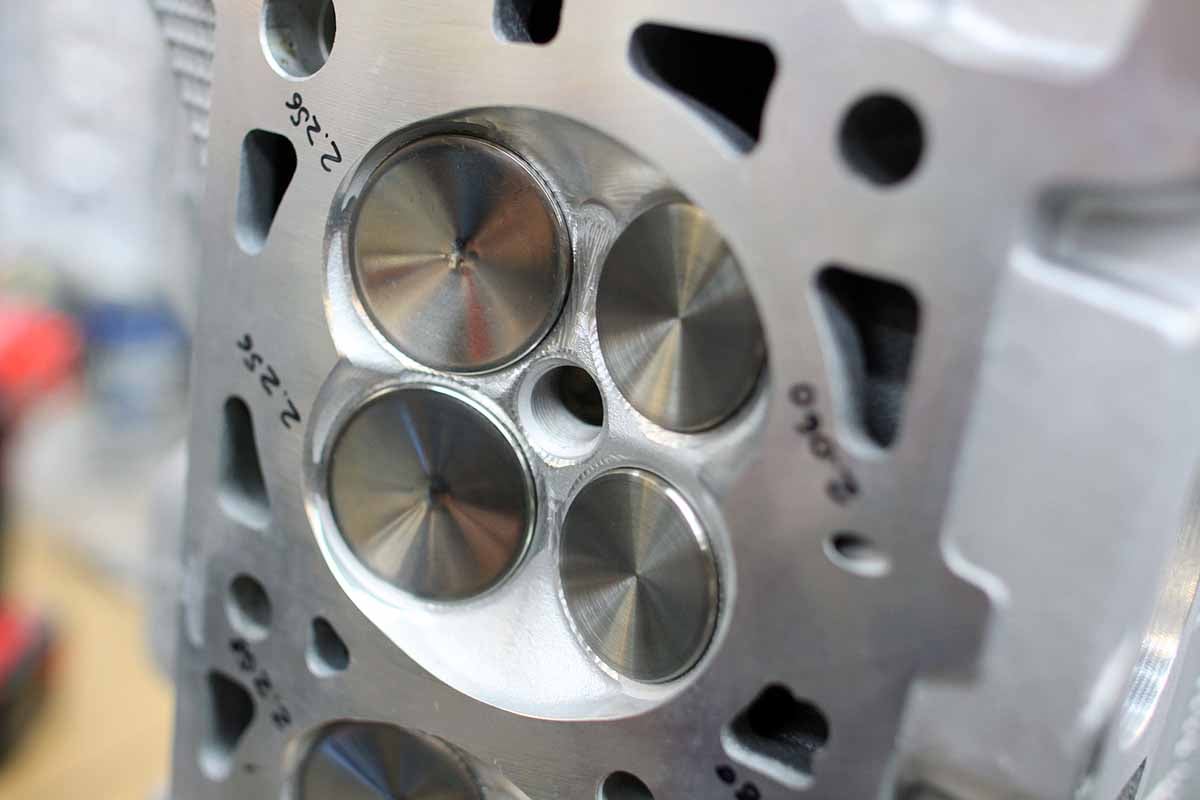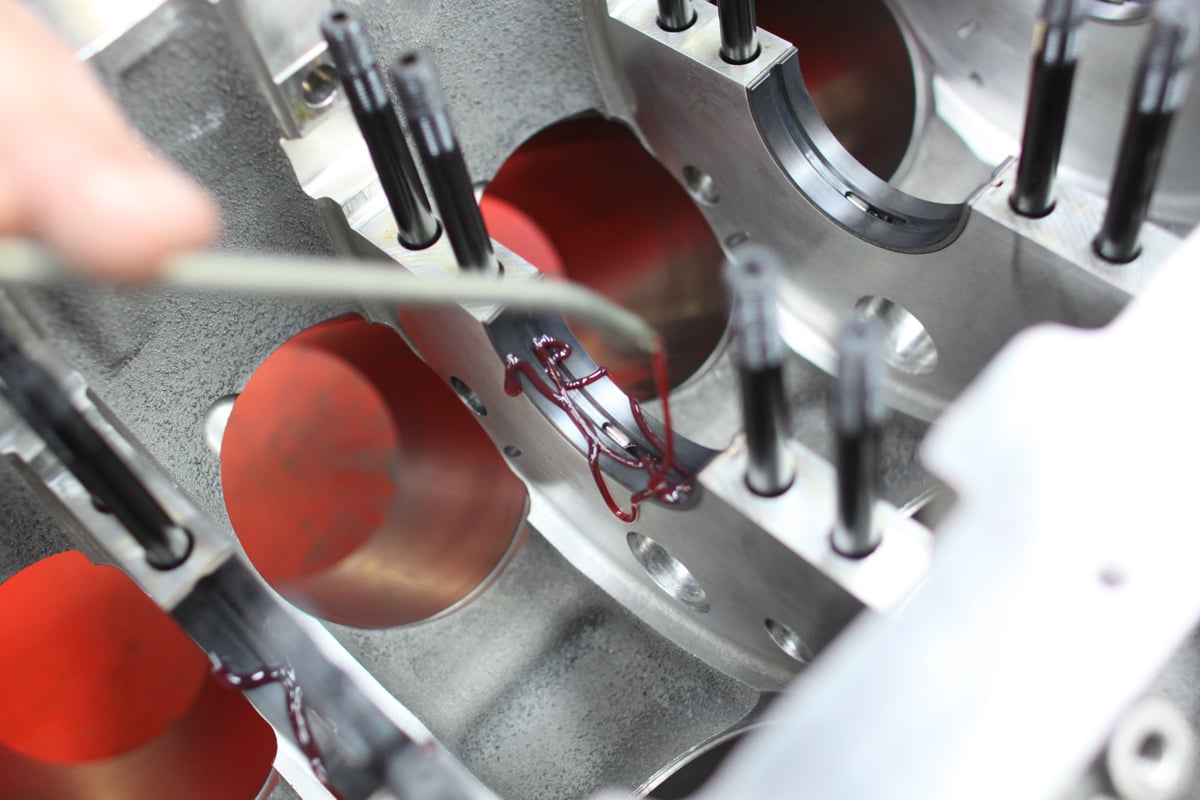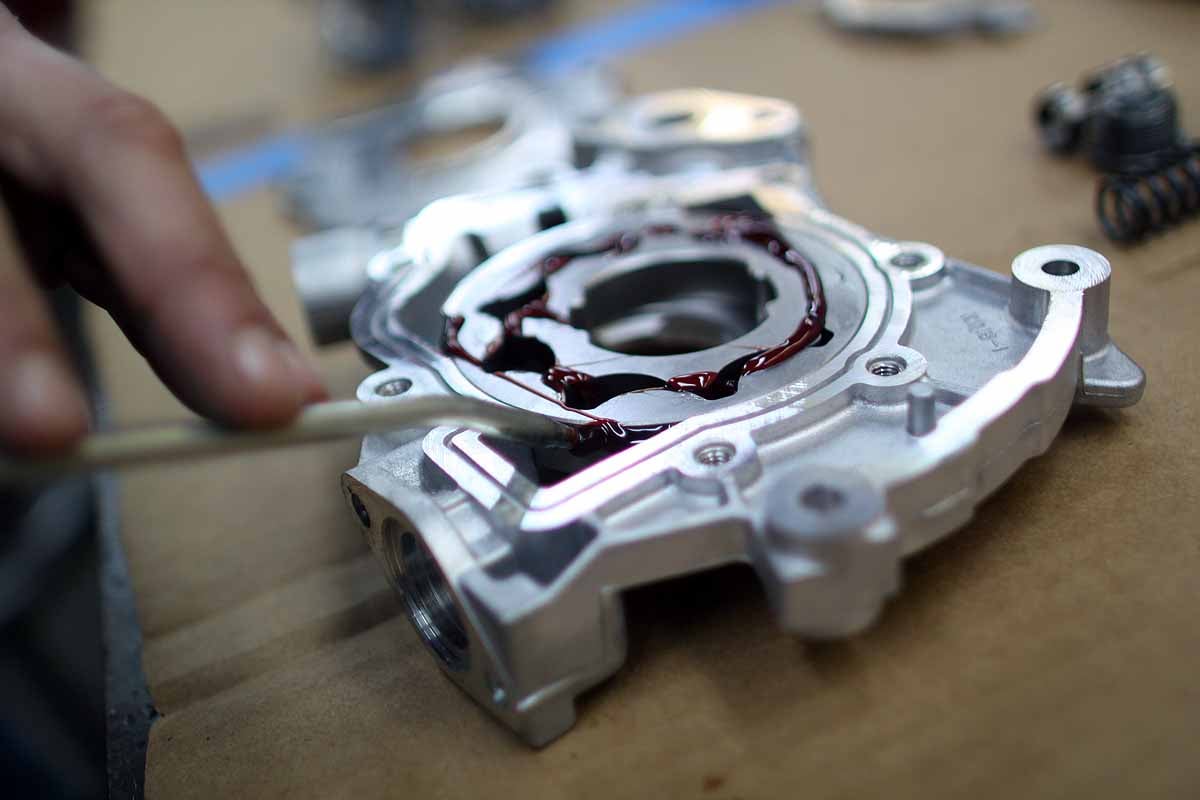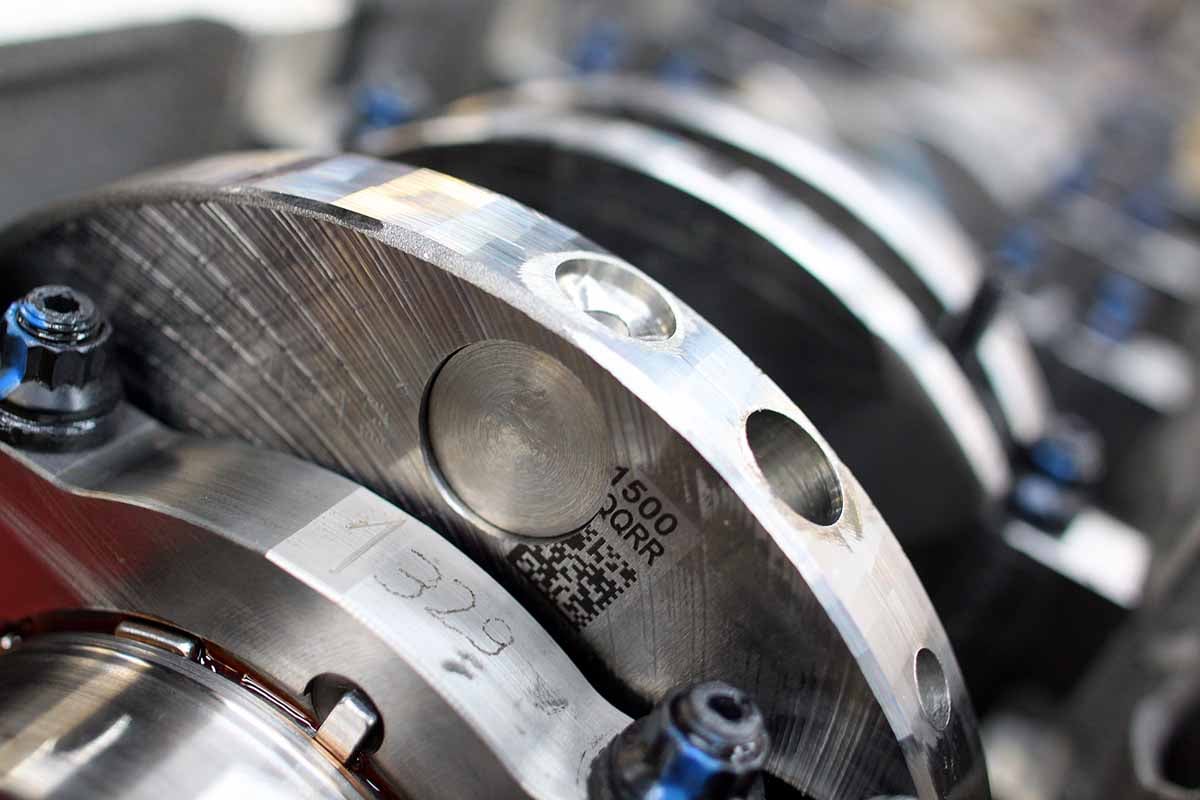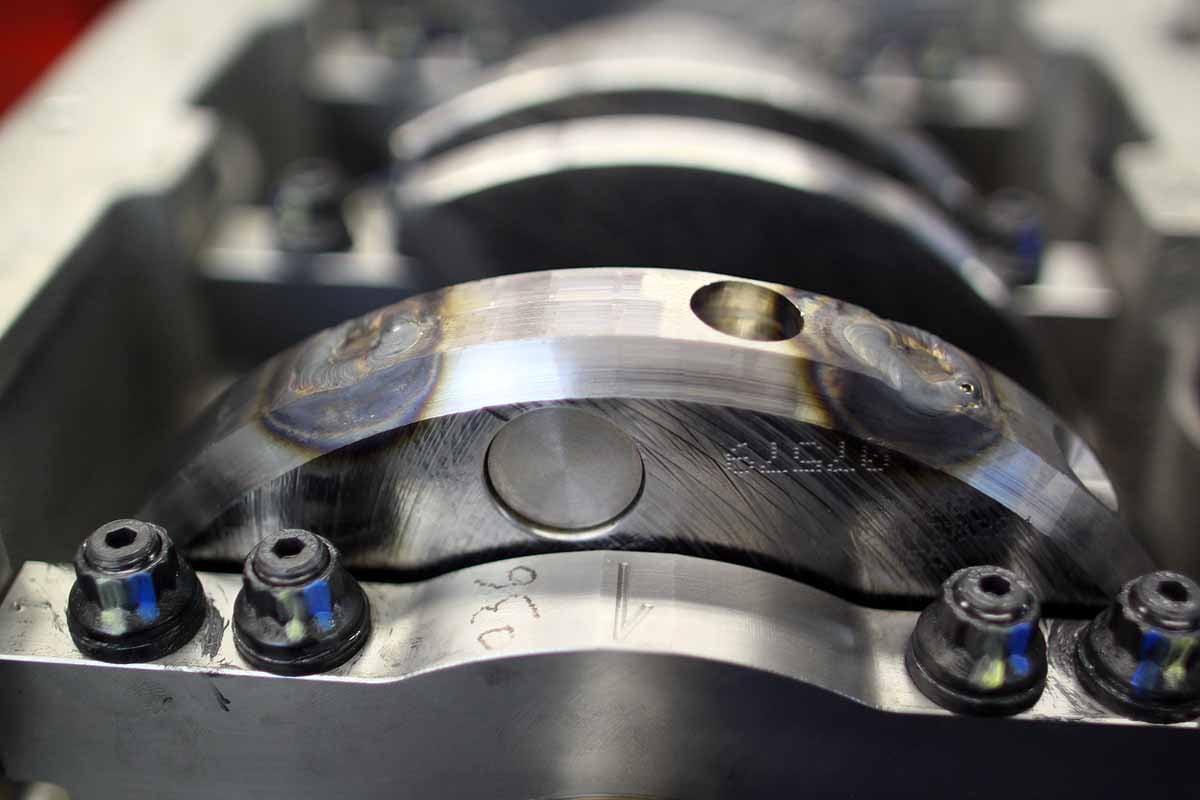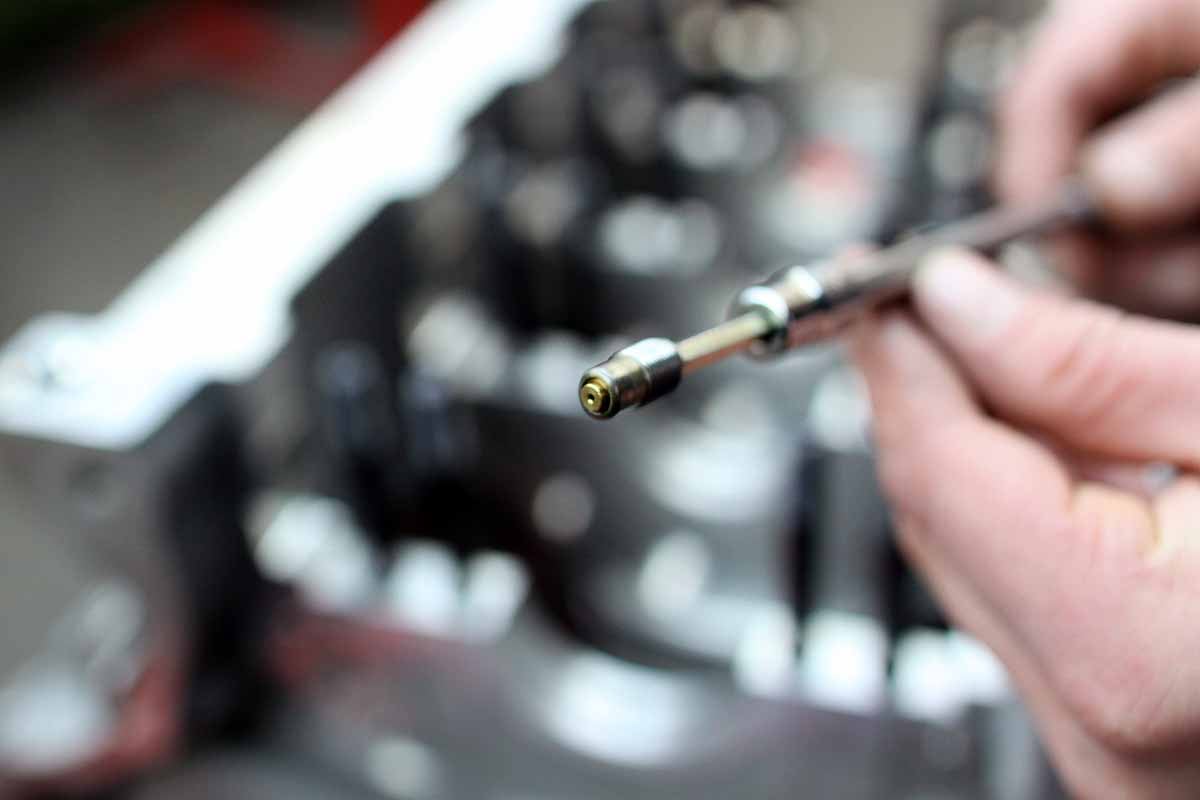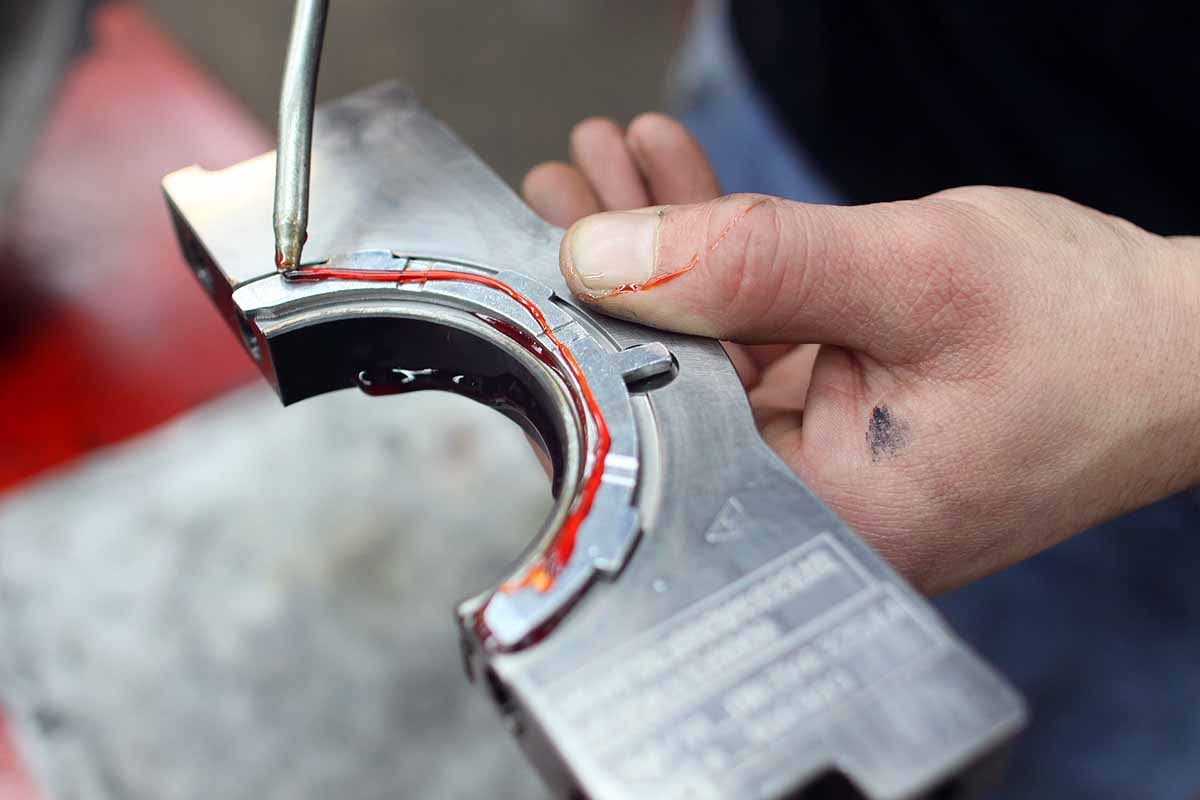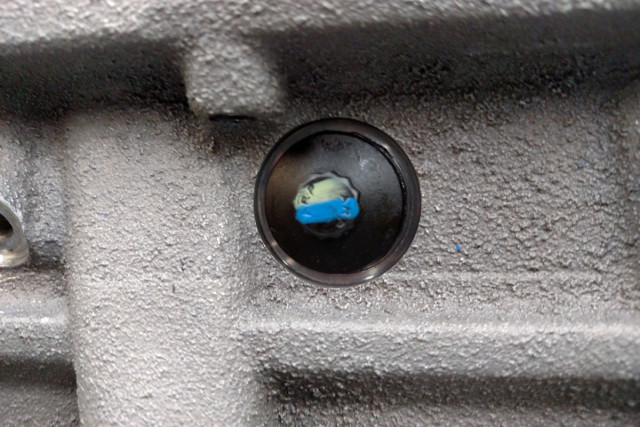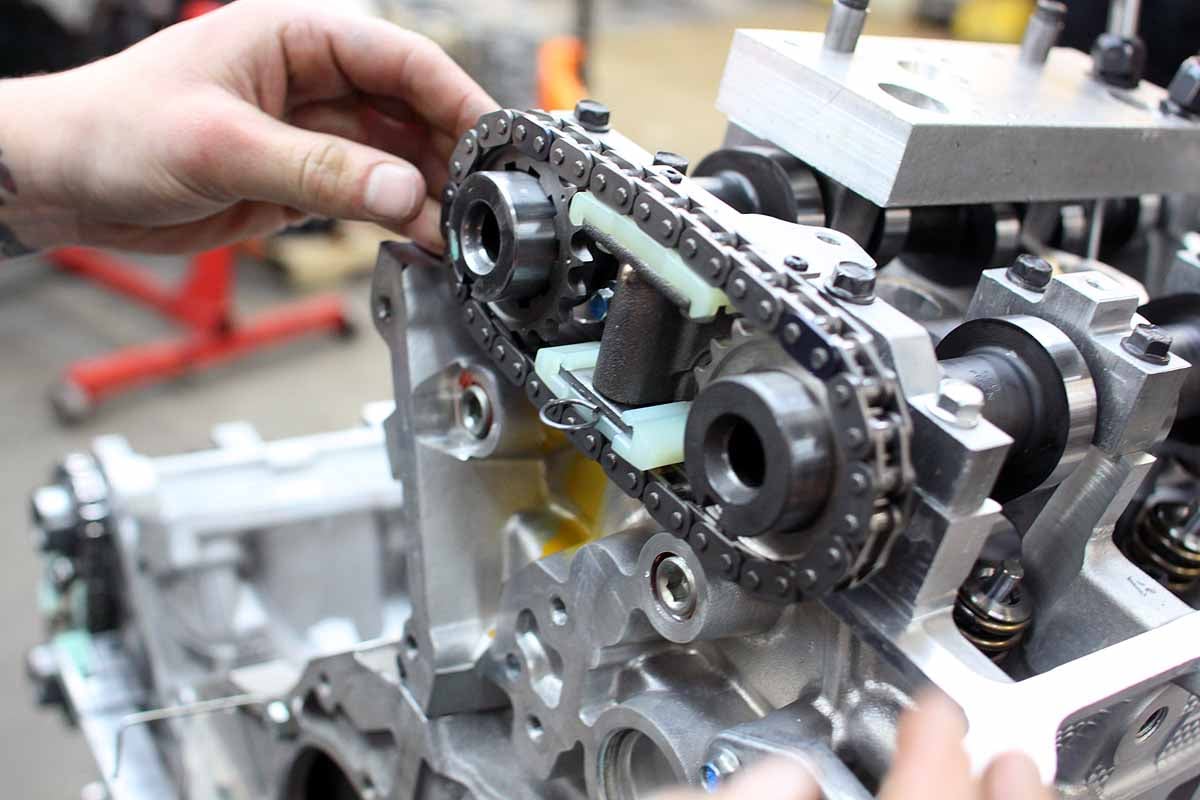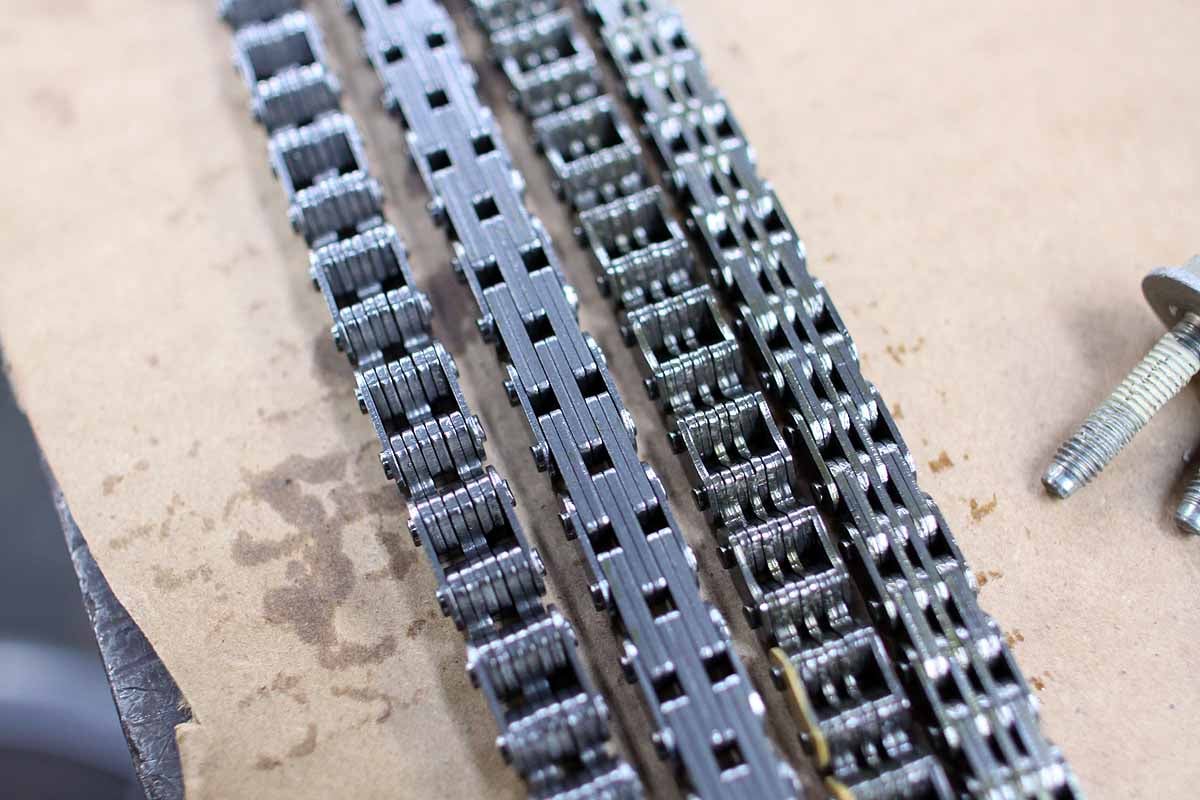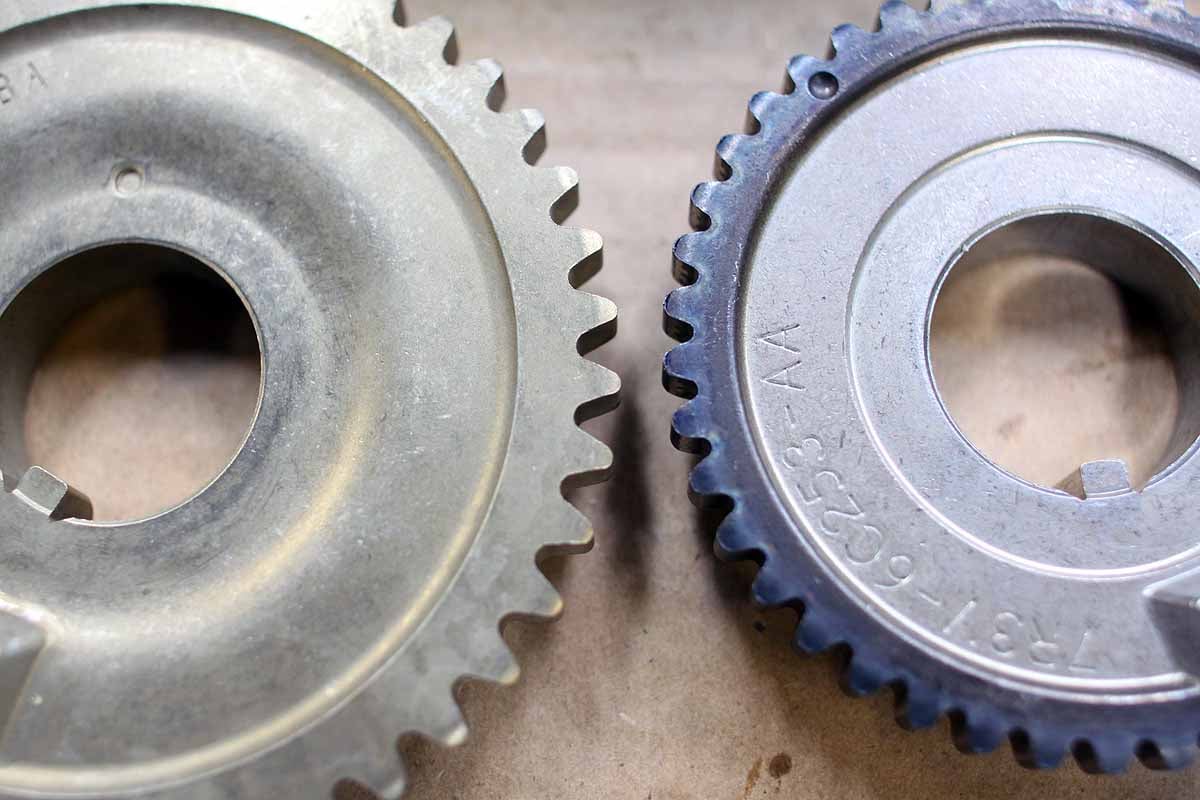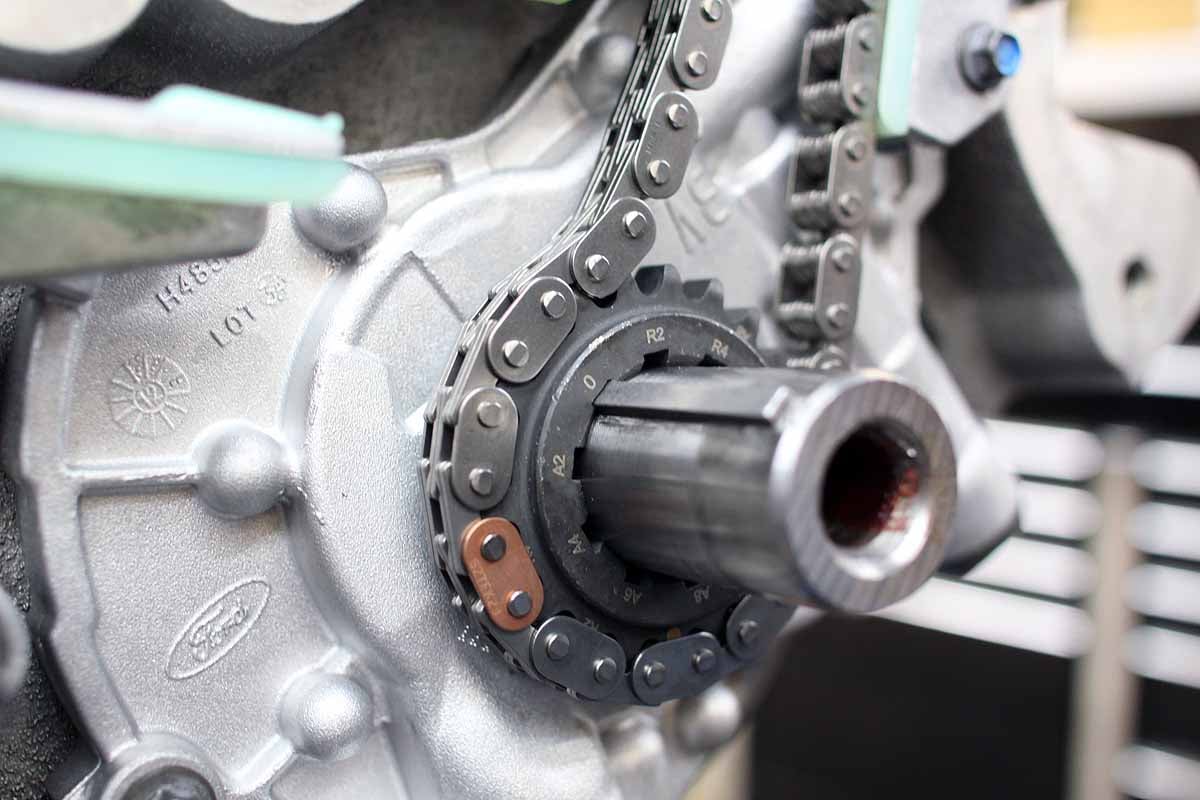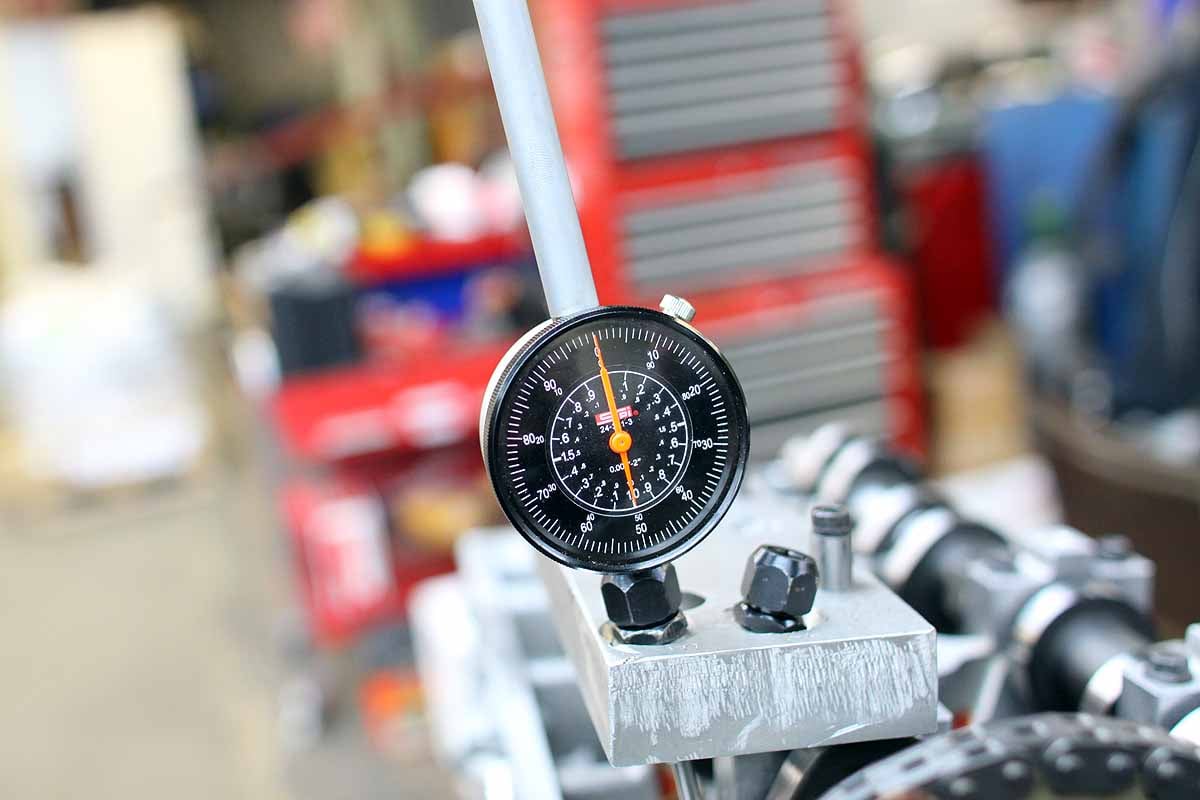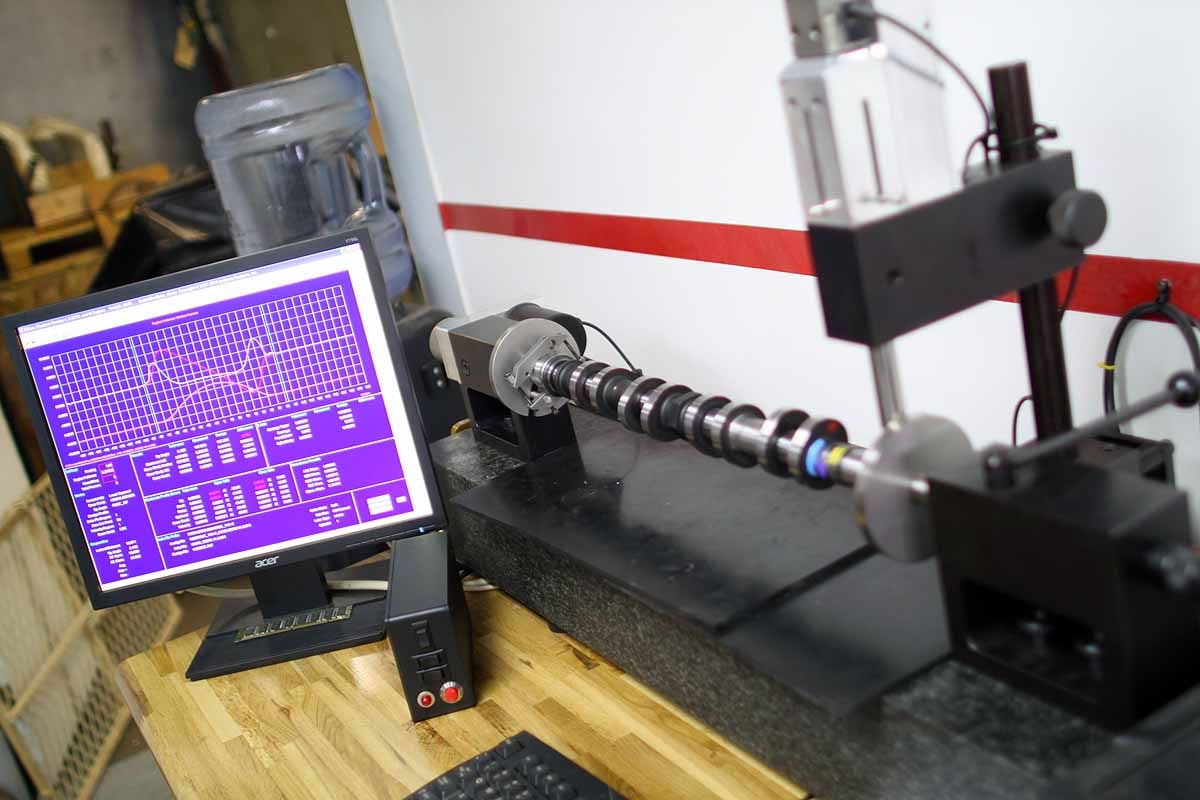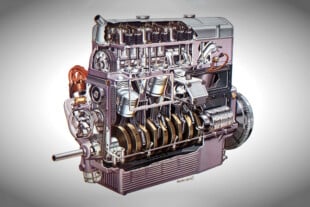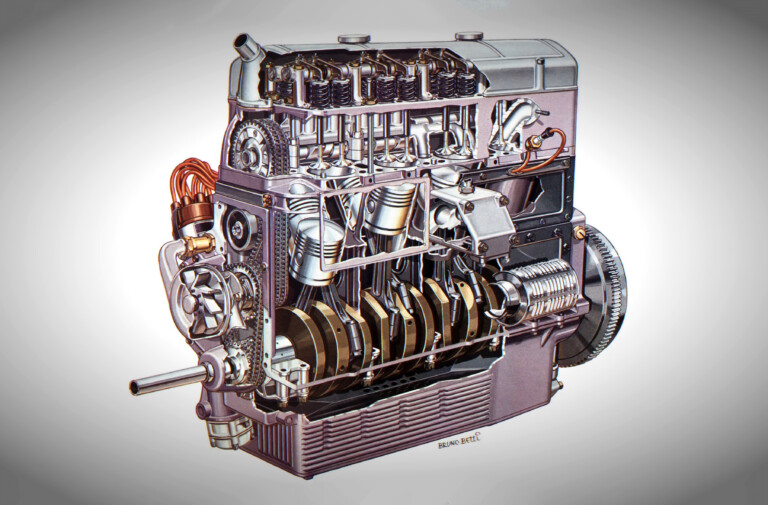The Ford late-model engine marketplace is chock-full of builders who specialize in the platform, but one in particular is responsible for many of the advancements found in the engine platform over the last decade or so – L&M Engines, headed up by engine builder guru and 40-plus-year industry veteran Michael Rauscher and his team of engine machinists and assemblers.
Located in the sleepy town of Hatboro, Pennsylvania, L&M has established itself as one of the go-to companies when one is seeking serious Modular performance. They’ve fostered a relationship with the guys at Evolution Performance, who have also shown a serious hankering for Ford performance; that relationship has seen the tandem team up to set many “Firsts,” especially as it relates to the Shelby GT500’s 5.4 and 5.8-liter four-valve Modular engines.
We recently had the opportunity to shadow the L&M team during assembly of a four-valve Modular that’s destined for competition in the Texas Mile, and in the process garnered some of their serious engine building tips. Some of these tips apply to the Modular platform in all its guises, two, three, and four-valve configurations. Follow along with us as we detail some of the advancements the team has made in its quest for killer performance.
Parts Selection
The engine that was assembled during our visit uses a stock aluminum block and forged crankshaft. According to Rauscher, these components are just fine for 95 percent of his customers; for the customer doing an all-out build the opportunity exists to modify the block with a set of ductile iron sleeves to improve rigidity and stability.
Other components used in the build are a set of L&M-designed Diamond forged 2618 pistons that ride on TREND Performance H-13 tool steel, DLC-coated piston pins with .200-inch thick walls. Nearly all of L&M’s big-power Modular builds get a set of Manley‘s Pro Series I-beam connecting rods. The company has found that these handle the performance level with room to spare, and their relative light weight allows the Modular engine to spin up quickly.
Left - Manley's Pro Series I-Beam connecting rods are a standby for all high-horsepower builds at L&M. Right - Rauscher designed a set of GT500-specific slugs that are produced by Diamond Racing; TREND Performance H-13 tool steel pins are used.
On the top side of the engine, again, stock castings are used as there are no suitable aftermarket Ford head castings. The reasons for this are simple – cost and efficiency. When Ford originally designed the GT500’s engine, the castings were already very efficient, capable of 662 horsepower on the stock GT500 engine and much more with pulley and supercharger upgrades. With a full 5-axis CNC port design implemented by the engine porting team at Slawko Racing Heads, these castings are ready for serious performance.
The cylinder heads are filled with stock-size Ferrea stainless steel valves, PAC valve springs, and Manley retainers and keepers. This assortment of parts has served L&M well. Rauscher picks the individual pieces based on their performance and longevity in the application. ARP‘s ARP2000 head and main studs are used in the build; their performance has proven effective over hundreds of engines.
Left - Slawko Racing Heads and L&M have worked together for years, and Slawko's CNC-ported GT Supercar castings are used in this application. Right - Valve installed heights should be identical; all valve jobs are done in-house at L&M.
L&M uses King engine bearings exclusively; Rauscher says he’s found excellent consistency in performance and dimensional accuracy from these pieces. They stock every imaginable size for these particular engines, allowing them to mix and match bearing shell sizes to attain proper oil clearance. More on this later.
During our discussion of the engine build, Rauscher stressed his approach to the entire process. “We address parts that fail, figure out why they have failed, and improve our engines in those areas,” he says. “Much of this is about the customer’s budget; the engine builder needs to take into account customer needs and wants, and balance that with parts that will perform and exceed their expectations.”
Left - Liberal application of assembly lube is a must. King's engine bearings are mixed and matched where required to achieve proper engine clearances. Right - L&M uses Triangle Speed Shop's billet oil pump gears in every engine. Rauscher says these are virtually required in any modular application making big power.
With that in mind, he uses OE Ford head gaskets unless the engine has a larger-than-stock bore, as the OE gasket has five layers and gives the engine excellent sealing ability. Where required, they’ll choose something different.
Now that we have the engine’s component specifics covered, let’s dive into the company’s strategy for building high-performance, record-setting Modular engines. We worked with engine builder Chris Hiel, who walked us through every step of the process, explaining how and why he did certain things during his build sequence. We left with a much greater understanding of what it takes to make a Modular engine sing.
#1 – Engine Balancing
As the crankshaft is the base for the entire rotating assembly, it’s critical to ensure that it’s balanced properly. And with many engines in the Modular performance realm using stock or modified stock crankshafts, L&M has found that simply improving on the factory’s balance processes has paid big dividends.
“We will take the factory crankshaft and measure its balance, but before we go and add any heavy metal, we will fill up some of the factory holes to try to cut down the amount of heavy metal required,” says Rauscher. “Of course it’s all dependent on the bobweight of the components, but often we are able to minimize the extra material we need to add to the crankshaft.”
Left - L&M presses heavy metal into the crankshaft with an interference fit, but does not weld the slugs into the counterweight for one reason - Rauscher says that welding does not work on tungsten, despite what you may have heard elsewhere. Right - During the balancing process, L&M will fill some of the crankshaft's factory holes before adding heavy metal, to lessen the amount of weight that needs to be added to the crankshaft.
The timing chains should be considered service parts, especially in a high-horsepower application, where it’s recommended to change them two or three times a year. – Michael Rauscher, L&M Engines
Often you will see engine builders weld the heavy metal into the crankshaft – Rauscher says this is an unnecessary step, and the company uses a serious press-fit to install their weights.
“Trying to weld tungsten [heavy metal] into the crankshaft’s counterweights looks pretty, but doesn’t really achieve anything as the weld does not adhere properly to the heavy metal,” he says. Rauscher draws upon his previous career as a certified welder for this knowledge, and says in all his years of pressing in the heavy metal slugs he’s never had one come out of the crankshaft, lending credence to this theory.
#2 – Oiling System Specs
The oiling system’s design in an overhead-cam engine like the Ford Modular is critical, and potentially more important than it would be in an overhead-valve engine. With overhead camshaft engines there are long timing chains, hydraulic tensioners and lash adjusters, and in the case of the three-valve 4.6 and 5.0-liter Coyote engine, camshaft phasers that all work on hydraulic pressure.
In order to keep this pressure consistent throughout the engine, L&M specifies each of their main bearing clearances as close to .002-inch as possible. “We play mix and match with bearing shells, and stock all sizes including OE, .001-inch over and under to give us the widest range of parts to choose from during assembly,” says engine builder Hiel.
Left - Factory piston squirters are reinstalled into the block. Right - Thrust clearances (and all others) are held as close to .002-inch as possible.
#3 – Tensioner Modifications
In a factory four-valve Modular, the camshaft drive chain’s tensioner on the right side of the engine actuates against the tension side of the chain. While this is very effective in terms of keeping the valvetrain quiet, especially upon engine startup, it has the unintended consequence of allowing the slack side of the chain to whip around in a racing application, especially when the engine is up against a transbrake or two-step rev limiter.
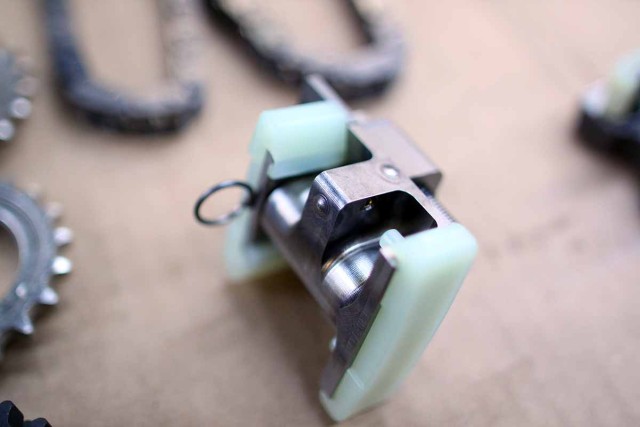
These modified tensioners for the right bank of the engine swap the tension to the slack side (for the factory’s design of tension on the tension side) to prevent the links from whipping around as much as possible.
L&M uses a modified tensioner that is reversed from the factory design, tensioning the slack side of the chain. Interestingly, Ford chose to set up the left side of the engine from the factory to tension the slack side. Also, oil metering in these tensioners is modified to limit the losses on the hydraulic piston to keep the tensioner against the chain, again, to remove the slack from the long drive chains.
Rauscher says, “We’ve found that attention to detail with the valvetrain in these engines is critical; by correcting some of the factory deficiencies we’re able to build a long-lasting race engine.”
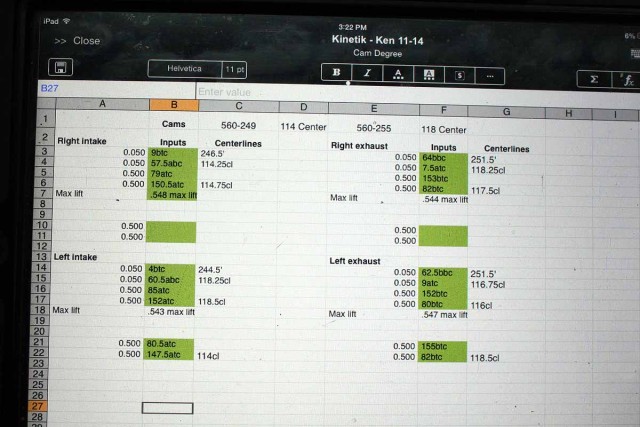
Here’s an example of that attention to detail – each of the builders has an iPad that allows them to record all critical dimensions of the engine build. In this instance, engine builder Hiel has recorded all of the timing events, which are inspected and verified by Rauscher before the engine is buttoned up.
#4 – Secondary Drive Chains
Insurance Steps
During our day at L&M, one thing we noticed was the incredible attention to detail. As each engine fastener was torqued, it was marked by the engine builder with a paint stick. When the engine was all finished, one of the other engine builders came over and re-checked every single fastener spec, and marked the fastener again. Finally, before the engine was closed up, Rauscher inspected every single fastener to act as a triple-check.
The team also uses iPads to track all of their critical specifications. Each builder has one, with proprietary software that is used to record things like camshaft specifications to ensure that the installed properties match up to the cams’ intended installed specifications.
The 10mm chains provide much greater strength in racing applications. The GT500 engines used an 8mm pitch (the center-to-center distance between the pins), and Rauscher says the change is 100 percent cost-related.
“There’s only one reason they used those 8mm chains in the GT500 engine, and that’s because it makes the engine able to fit into the engine bay from underneath on the assembly line. The valve cover width is too great with the larger sprockets,” he says.
Racing applications will benefit greatly from this cost-effective modification. This requires the use of Ford GT Supercar valve covers, with no oil fill provisions – the oil is subsequently filled through the PCV hole.
“When changing crankshaft speed, like on the two step or RPM limiter, the chain will start to whip around, and that is when factory chains will break. New chains reduce the chances of breakage, but do not completely eliminate issues. The only way to completely avoid breakage is to avoid hitting the limiter, which is sometimes impossible. The timing chains should be considered service parts, especially in a high-horsepower application, where it’s recommended to change them two or three times a year,” explains Rauscher.
L&M uses the 2003-'04 Cobra/Navigator 10mm pitch drive and secondary chains in all of their four-valve builds. These parts are much stronger than the 8mm-pitch chains originally installed in the GT500 engines.
#5 – Timing Specifics
The largest amount of time spent during our trip was during the timing process. With four camshafts, four chains, and six sprockets – four of which are adjustable – the better part of the afternoon was spent optimizing the engine’s timing. L&M uses Cloyes‘ adjustable timing gears to set the engine to the exact parameters for optimal performance.
Hiel used a set of custom solid lash adjusters to begin the process. Rauscher has made these products specifically for timing the Modular engine platform – they have an adjustable set screw that permits the engine builder to determine true zero lash on the roller follower. If zero lash is not achieved, the rest of the process will not play out as necessary to ensure proper timing events will take place.
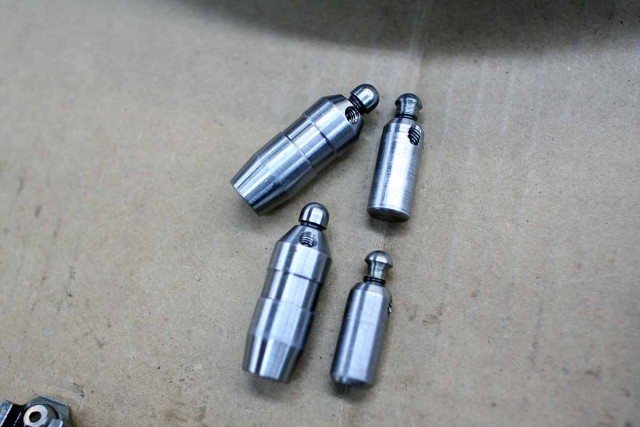
Custom threaded solid lash adjusters made by L&M permit the builder to set the follower to zero lash to perform the rest of the timing measurements.
The timing check is performed on cylinders one and six, using a custom fixture developed by L&M to put the needle of the dial indicator directly onto the flat part of the valve retainer – they have one of these for each of the Modular engine platforms, and it’s designed to also clear the roller follower to permit unimpeded movement.
Interestingly, timing on the left side of a four-valve Modular engine is always out approximately six degrees on both the intake and exhaust cams, according to Rauscher.
Left - Adjustable crankshaft sprockets permit adjustment of the exhaust camshafts; intake cams use another adjustable sprocket for a total of four adjustable sprockets in the engine. Middle - The intake sprockets use a key that fits in between the sprocket and camshaft to hold timing events in place. Right - L&M's custom timing fixture - the company has one of these for each of the Modular engine platforms. It holds the dial indicator's pointer rigidly and permits measurement on the flat of the valve retainer.
“It’s due to emissions concerns. The right side of the engine is typically correct in terms of camshaft specifications. The left side of this particular engine is out two degrees retarded from the 118 centerline spec on the exhaust side, and the intake side needs to be advanced four degrees,” says Hiel.
However, because of variances in chain length and cylinder head deck and block dimensions, along with variances caused by using the actual valve spring instead of a checker spring, the dimensions can appear off slightly. Experience tells the builder how much to actually move each cam gear to correct the timing. Hiel has built hundreds of Modular engines, so he made quick work of a process we’ve seen take an entire day.
#7 – Camshaft Details
One of the lesser-known aspects of L&M’s business is Rauscher’s skill in building camshaft profiles. He uses an EZCAM gauge system from Andrews High Performance Cams & Gears to develop his own profiles and test each one before it’s ever installed into an engine.
The camshafts are designed in-house, then ground by COMP Cams to Rauscher’s design file all the way out to eight decimal places. Once the cam arrives, it’s removed from the box and put onto L&M’s EZCAM fixture to test the dimensions and ensure they’re ground as specified.
Left - the EZCAM system verifying that camshaft measurements are ground as designed by Rauscher. Right - Check out that level of detail!
Each camshaft is turned on the EZCAM gauge, which references the dimensions within .10 degrees and .000005-inches and measures for lobe velocity, acceleration, jerk and radius of curvature to ensure the camshaft will perform as designed once installed into the engine. This level of detail during the development process is just one of the things that makes L&M’s engines unique.
In Conclusion
We’re still digesting all of the information we gleaned from our trip to L&M Engines. Rauscher stressed during our visit that he’s not reinventing the wheel; rather, after hundreds of engines built, records set, and extensive research and development, he’s put together solid machining and assembly processes to build engines that are capable of well north of 1,000 horsepower in many instances. Seven and eight-second drag cars, 200-plus MPH “Mile” cars, and many satisfied enthusiasts later, we have to believe he’s been successful.
The tips provided in this article can be applied to the majority of Modular engines; although there are some that are Four-Valve specific, many can be applied to each of the platforms to create a solid base for excellent performance.



